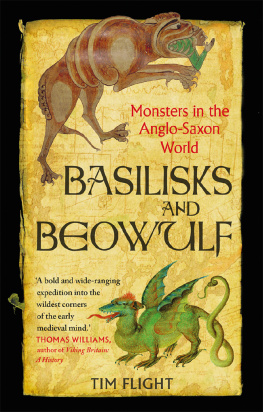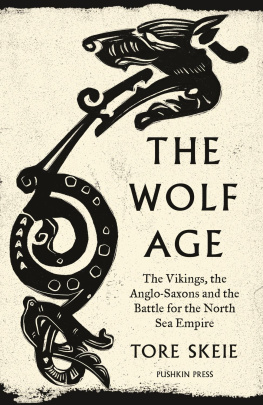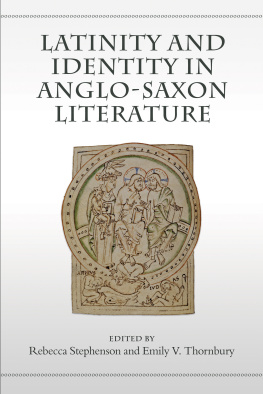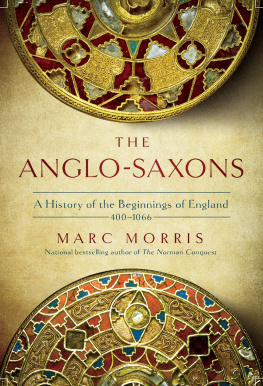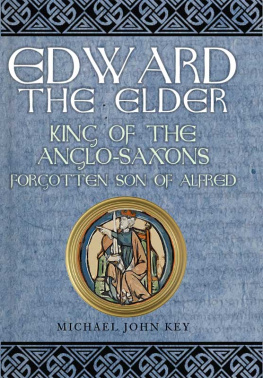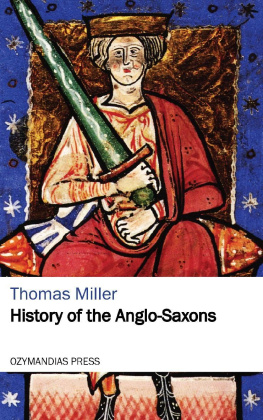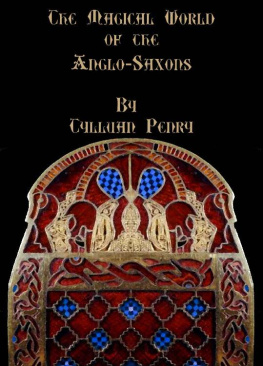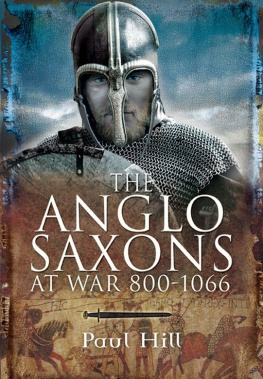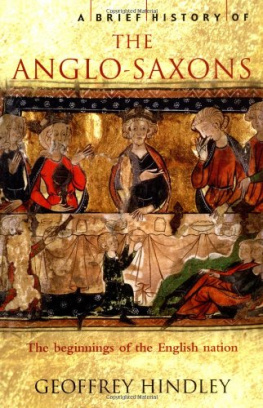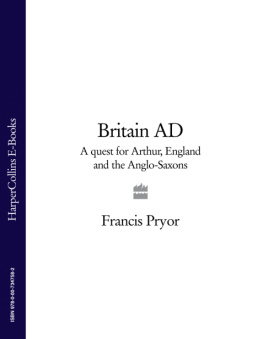Donoghue - How the Anglo-Saxons Read Their Poems
Here you can read online Donoghue - How the Anglo-Saxons Read Their Poems full text of the book (entire story) in english for free. Download pdf and epub, get meaning, cover and reviews about this ebook. City: Philadelphia, year: 2018, publisher: University of Pennsylvania Press, genre: Children. Description of the work, (preface) as well as reviews are available. Best literature library LitArk.com created for fans of good reading and offers a wide selection of genres:
Romance novel
Science fiction
Adventure
Detective
Science
History
Home and family
Prose
Art
Politics
Computer
Non-fiction
Religion
Business
Children
Humor
Choose a favorite category and find really read worthwhile books. Enjoy immersion in the world of imagination, feel the emotions of the characters or learn something new for yourself, make an fascinating discovery.

How the Anglo-Saxons Read Their Poems: summary, description and annotation
We offer to read an annotation, description, summary or preface (depends on what the author of the book "How the Anglo-Saxons Read Their Poems" wrote himself). If you haven't found the necessary information about the book — write in the comments, we will try to find it.
Donoghue: author's other books
Who wrote How the Anglo-Saxons Read Their Poems? Find out the surname, the name of the author of the book and a list of all author's works by series.
How the Anglo-Saxons Read Their Poems — read online for free the complete book (whole text) full work
Below is the text of the book, divided by pages. System saving the place of the last page read, allows you to conveniently read the book "How the Anglo-Saxons Read Their Poems" online for free, without having to search again every time where you left off. Put a bookmark, and you can go to the page where you finished reading at any time.
Font size:
Interval:
Bookmark:
How the Anglo-Saxons
Read Their Poems
THE MIDDLE AGES SERIES
Ruth Mazo Karras, Series Editor
Edward Peters, Founding Editor
A complete list of books in the series is available from the publisher.
ANGLO-SAXONS
READ THEIR POEMS

DANIEL DONOGHUE

Copyright 2018 University of Pennsylvania Press
All rights reserved. Except for brief quotations used for
purposes of review or scholarly citation, none of this book
may be reproduced in any form by any means without written
permission from the publisher.
Published by
University of Pennsylvania Press
Philadelphia, Pennsylvania 19104-4112
www.upenn.edu/pennpress
Printed in the United States of America on acid-free paper
1 3 5 7 9 10 8 6 4 2
Library of Congress Cataloging-in-Publication Data
Names: Donoghue, Daniel, 1956- author.
Title: How the Anglo-Saxons read their poems / Daniel Donoghue.
Other titles: Middle Ages series.
Description: 1st edition. | Philadelphia: University of Pennsylvania Press, [2018] | Series: The Middle Ages series | Includes bibliographical references and index.
Identifiers: LCCN 2017037677 | ISBN 9780812249941 (hardcover: alk. paper)
Subjects: LCSH: English poetryOld English, ca. 450-1100History and criticism. | Oral interpretation of poetryHistoryTo 1500.
Classification: LCC PR203 .D66 2018 | DDC 829/.1009dc23
LC record available at https://lccn.loc.gov/2017037677

The conventions governing the display of verse today are so well established that it takes some effort to recognize their utter arbitrariness. Flip through any classroom anthology or consult the latest New Yorker and you will find poems with a line break for each line of verse, usually flush left with a ragged right-hand margin, and conventional English punctuation. To be sure, the long persistence of counterexamples like George Herberts Easter Wings, Emily Dickinsons eccentric dashes, e.e. cummingss typography, or Jorie Grahams blanks on the page reminds us that the manipulation of these conventions is nothing new, but their innovations would be pointless unless the conventions were well established in the first place. In this regard things have not changed much over the past seven centuries: most poems published today still bear a visible resemblance to medieval manuscript copies of, say, Chaucers Troilus and Criseyde. Although it is less likely today than it was a century ago, for example, that a capital letter will begin each line of verse, the start of sentences and proper nouns will usually be capitalized in almost any poem. The basic format has been remarkably stable. While exceptions are not hard to find, even the most experimental layouts achieve their effects within the confines of the convention.
By contrast, few bodies of literature can defamiliarize the apparent naturalness of these conventions as can the earliest written poems in English, which to our eyes do not look like verse at all. A poem like The Wanderer, for example, is written out from margin to margin in the Exeter Book with scant punctuation, few capitals, and no use of space to separate verse lines or paragraphs. In a deft allusion to this practice, Seamus Heaney includes a poem called The Wanderer in his 1975 pamphlet Stations. In it a teacher congratulates the schoolboy Seamus, who has just won a scholarship, by awarding him a coin in front of his classmates.of gift-giving that permeates the Old English poem, in which the anhaga or wanderer keenly recalls the pleasures of the mead hall. Heaney reaches for a different kind of allusion in making his Wanderer a prose poem, with the lines written out from margin to margin, which mimics the appearance of The Wanderer in the Exeter Book. It is not a question of form imitating form because the Old English alliterative verse conventions are quite different, as Heaney well knew, but the margin-to-margin printing of The Wanderer is a poets nod to the manuscript appearance of the medieval poem.
The long lines of Heaneys Wanderer effectively reverse the convention observed by editors of Old English poems, who confidently move from the spare manuscript presentation to produce editions with all the modern typographic conventions we associate with verse: lineation, paragraph indentation, punctuation, and capital letters for proper names and the opening of sentences. These edited texts are the versions that we have come to know of The Wanderer, Beowulf, and other poems. Even though every Anglo-Saxonist is aware of the underlying manuscript presentation, the transition to the modern format has drawn relatively little comment. We simply accept it, and in accepting it draw the silent conclusion that the two formats are somehow equivalent. Scholarly discussion of the manuscript layout rarely moves beyond description to ask why the poems should be displayed with such sparse visual cues in the first place, but it is worth considering how a medieval reader could recognize and read these lines as a poems. To say the Anglo-Saxons simply knew how to read their poems is merely to restate the question of how because it is not at all obvious what that knowledge consists of.
Yet somehow the manuscript presentation was adequate to the task for the first generations of readers. It is not as though Anglo-Saxon scribes were encumbered by primitive scribal practices at their disposal and could produce only a compromised text. On the contrary, they had equivalents to the same visible cues we associate with poetry todayverse lineation, capitals, a system of punctuation, and various uses of spaceeach of which found a use in other kinds of writing. Old English verse was different. A central concern of this book is the scribes collective choice not to incorporate most of these available cueswhen they clearly could have done soas they transcribed many thousands of lines of their vernacular poems. Their practice presupposes a reader who brought a robust set of expectations to the task and who honed those expectations through a lifelong participation in traditional poetics. In asking how the Anglo-Saxons read their vernacular poems in manuscript, this study poses a question more complicated than it may first appear. The act of reading, then as now, has always been more than a slow crawl of the eyes across the line of writing; it is more than the mechanical process of picking out letters and words and stringing them together into half-lines that alliterate. A process like this certainly forms part of it, but it oversimplifies the complex mental activity that allows readers from any period to comprehend a written text, especially a work of verbal art.
In many ways this books topic is old, at least as old as the editing and printing of Old English poems. To the first editors the manuscripts seemingly haphazard presentation could be rendered intelligible only through heroic effortsimpler in scale but not unlike deciphering Greek fragments on papyri or Assyrian cuneiform on clay tablets. The fields longstanding scholarly consensus has been that the earliest readers of these manuscripts knew the language and the poetic conventions with enough intimacy that they could construe the lines despite the sparse graphic conventions, even though it made the process of reading laborious. This extra effort, according to some, compelled readers to utter the words aloud. Moreover, leaving a blank, ragged right-hand margin would be a waste of precious vellum, especially for vernacular poems, which carried less prestige than the Latin literature whose codices filled medieval libraries. This consensus is largely correct as far as it goes, but it leaves too many questions unanswered. Take punctuation, for example. We know that some scribes who wrote out the poems might also transcribe Latin poems and Old English prose texts, both of which used punctuation with greater regularity. Why did the scribes refrain from introducing the same marks of punctuation to their vernacular poems? It would have taken little effort to do so and would have added little to the physical length of the text. The question deserves a fresh look.
Next pageFont size:
Interval:
Bookmark:
Similar books «How the Anglo-Saxons Read Their Poems»
Look at similar books to How the Anglo-Saxons Read Their Poems. We have selected literature similar in name and meaning in the hope of providing readers with more options to find new, interesting, not yet read works.
Discussion, reviews of the book How the Anglo-Saxons Read Their Poems and just readers' own opinions. Leave your comments, write what you think about the work, its meaning or the main characters. Specify what exactly you liked and what you didn't like, and why you think so.


